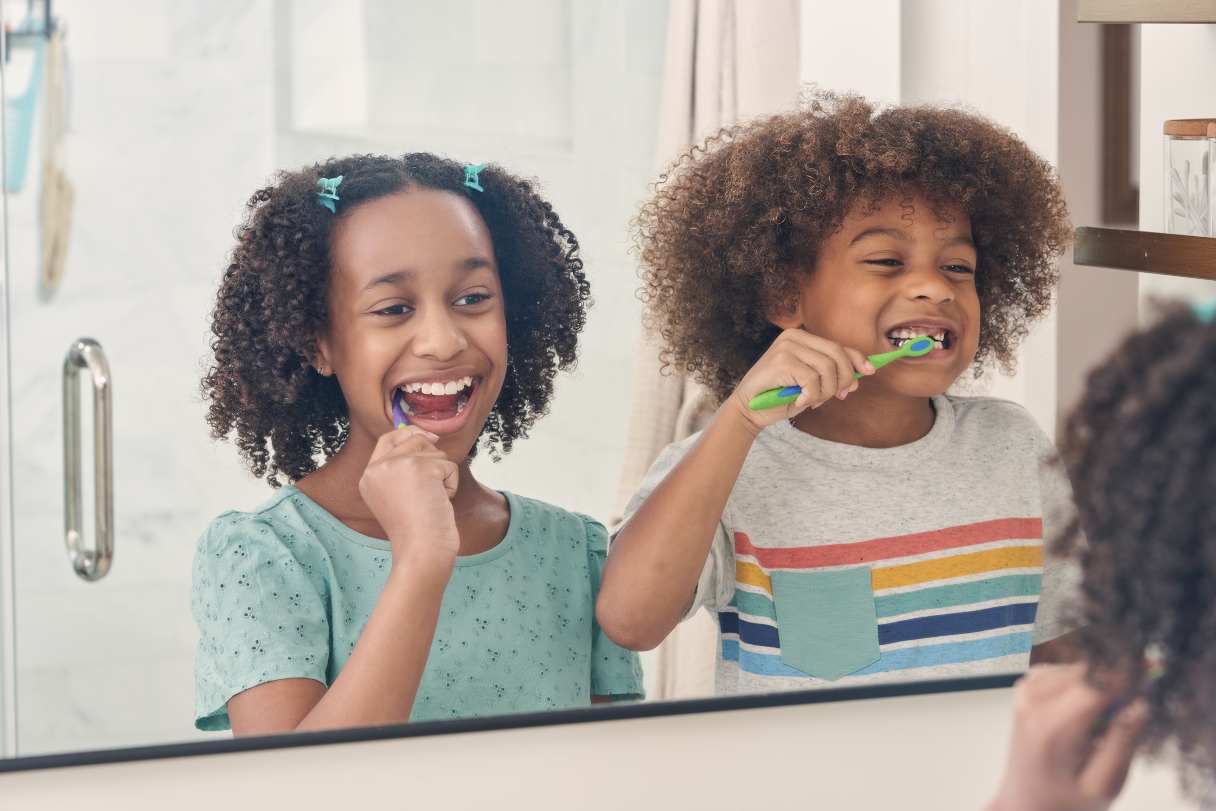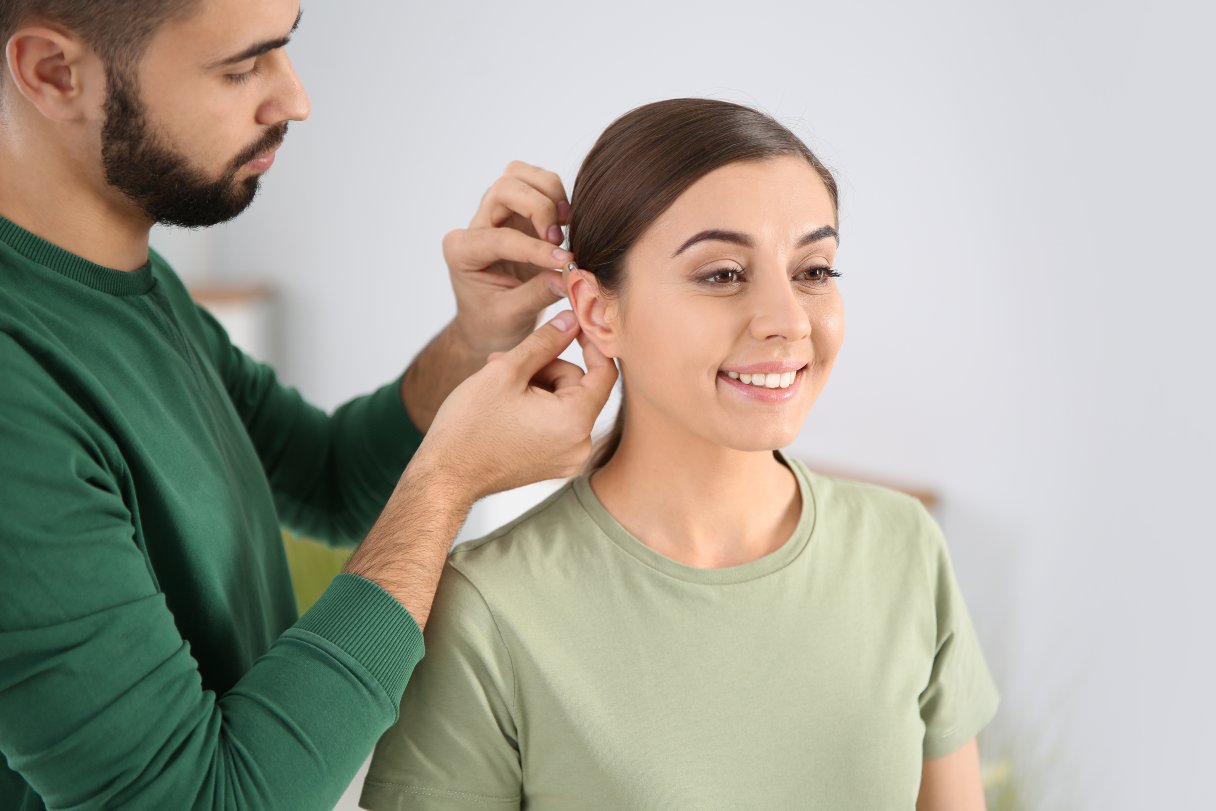Brushing your teeth twice a day is one of the best ways to help avoid cavities and gum disease, but you probably already know that. What you may not know is that 25% of all adults don't brush their teeth as much as they should, opening themselves up to periodontal disease which has been attributed to a bevy of health problems, including diabetes, Alzheimer's disease and heart disease. The question is: does the type of toothbrush you use matter much when it comes to keeping decay away?
Research shows that both manual and electric toothbrushes do a good job of plaque removal and gum disease prevention when used properly. So, it really comes down to personal preference. Here's an overview of each type to help you decide which one is better for you.
History of the Toothbrush
Much like us, our ancestors liked having clean teeth. That's why the toothbrush has a long history that dates back thousands of years. Here are some fun facts1:
- Starting in 3500 B.C., the Egyptians and Babylonians used a type of frayed twig "toothbrush" to clean their teeth.
- The Chinese invented more modern brushes made with pig hair in the 1400s.
- In 1780, William Addis invented a carved-handle toothbrush with pig's hair.
- Much like today's brushes, a three-row toothbrush came about in 1844.
- After the invention of nylon, a nylon-bristle brush followed in 1938.
- In 1939, the first electric toothbrush was invented.
- Soft-bristle manual brushes became popular in the 1950s.
- By 1960, the first commercially available electric toothbrush was invented.
Electric vs. Manual Toothbrush Key Differences
The main difference between a manual toothbrush and an electric toothbrush is who is doing most of the work - you or the toothbrush.
- Manual toothbrushes are fixed and do not move on their own — they're purely people-powered.
- Electric toothbrushes have automated parts that can sweep over teeth in a variety of motions. They clean teeth by vibrating, oscillating, moving side-to-side or using sonic technology, which moves the toothbrush heads significantly faster.
Some people like the fact that electric toothbrushes give their wrist a break or when dexterity is an issue. Others don't like the sensation of independent movement on their teeth and gums, especially if they suffer from sensitive teeth during colder winter months.
Electric Toothbrush Benefits
An electric toothbrush has many benefits that can help keep your teeth as clean and healthy as possible. That's because it does most of the work for you and can give you a better overall clean than a manual brush.
Most effective against plaque
Plaque is a sticky and bacteria-filled film caused by food particles that form on the teeth. If it's not cleaned away by daily brushing, it can harden into tartar, which is only removable during a dental cleaning.
- When it comes to plaque removal, electric toothbrushes seem to have a definite advantage, as determined by one study published in 2021.2
- Another study conducted over an 11-year period found that electric toothbrushes resulted in 22% less gum recession and 18% less tooth decay.3
- Electric toothbrushes can remove much more plaque than traditional manual brushes due to their machine-powered movements.4
- One of the dentist-recommended brands on the market, Oral-B®, produces electric toothbrushes that deliver up to 48,800 movements per minute. This is in contrast to manual toothbrushes that can only deliver 300 to 600 movements per minute.5
- Some electric toothbrushes oscillate, rotate and pulse to loosen and sweep plaque away.4 This makes them more effective than a manual brush.6
Best for people with limited mobility
For those suffering from arthritis in their hands and arms, carpal tunnel syndrome and developmental disabilities, an electric toothbrush works best because it does most of the work for you. Also, those who have other issues with dexterity may appreciate the ease of using electric toothbrushes.
Timer functions
To maintain a healthy smile, you need to brush for at least two minutes at a time, twice a day. However, when you're first reaching for that toothbrush in the morning after you wake up or before you collapse in bed at night, running a timer on your phone or watch is probably the last thing on your mind. That's why most electric toothbrushes have a timer function that lets you know when your two minutes are up.
Some even work with apps that let you keep track of your brushing daily so that you know you've been brushing for two minutes twice a day, every day. This encourages better dental habits and a cleaner mouth.
Less waste
Whether you're using a manual toothbrush or an electric one, you'll need to change it every three to four months. While you'll have to toss your entire manual toothbrush in the trash, you'll only need to replace the brush head of your electric toothbrush, resulting in less waste in the long run.
Fun for kids
Let's face it: Kids love gadgets. That's why many parents choose electric toothbrushes to help keep their kids interested and engaged in the brushing process. Overall, these types of brushes do a better job of cleaning your little one's teeth — and they may even play music or feature their favorite cartoon characters. They basically make brushing fun, but remember that they work best for kids age 3 and above.
Safe for gums
Electric toothbrushes are gentler on your gums than a manual brush, and some can even sense if you're pushing too hard on your gums while brushing.
- These brushes will buzz or otherwise visually alert you to brush with less pressure.
- This helps to promote healthier gums because aggressive brushing can lead to problems like gum recession.
- Having healthy gums is important, especially if you are pregnant or going through menopause. That's because conditions like gingivitis and tooth sensitivity can flare up during these periods.
Good for those with braces
Those with braces will appreciate having an electric toothbrush because they can get into the nooks and crannies that manual brushes simply can't. This encourages better dental health.
Manual Toothbrush Benefits
While electric toothbrushes have many benefits, manual brushes have some advantages as well, mainly because they are so inexpensive and require no special charger to function.
Accessible
You'll find manual toothbrushes just about everywhere you go. You can get them in grocery stores, drug stores, convenience stores, gas stations and hotel front desks. Your dentist will even give you one during your twice-yearly dental cleanings. Electric toothbrush brush heads compatible with your model can be harder to locate.
Affordable
Manual toothbrushes are much cheaper than electric ones, costing as low as $1 in some places. This makes them a more budget-friendly solution for those who can't afford an electric toothbrush.
Doesn't take up much space
A manual toothbrush doesn't take up much space on your countertop, and you can put it away in a drawer if counter space is limited. You also don't have to plug it in, which may work better for those with an older bathroom that doesn't have an easily accessible electric socket.
Easy to travel with
Manual toothbrushes are easy to travel with, especially internationally. That's because you don't have to worry about packing a charger or batteries for them. And your charger may not work in a foreign country.
Manual vs. Electric Toothbrush Cost Difference
Electric toothbrushes can be significantly more expensive than manual toothbrushes:
- Fully electric toothbrushes cost anywhere from under $15 to $250 each.
- You'll typically find fully disposable electric and battery-powered brushes for under $10.
- Battery-powered brushes may not be as powerful as rechargeable electric toothbrushes, but they are easy to maintain, requiring only battery and brush head changes regularly (for those that aren't fully disposable). Plus, they're easy to travel with and their cost is only a few dollars higher than a manual brush.
- On the mid to high range, you'll typically get a permanent handle that comes with replaceable brush heads. The heads run between $10 and $45 for a package of two or more and may be difficult to find, depending on the selection at your local stores.
- This is in contrast to manual brushes which usually cost between $1 and $3.
Tips for Brushing Teeth
Whether you choose a manual or electric toothbrush, be sure to follow American Dental Association® guidelines for optimizing safety and brushing effectiveness, including:
- Choose a toothbrush that fits your mouth.
- Use one that has soft bristles.
- Look for brushes that come with the ADA seal of approval.
- Select a fluoride toothpaste, brushing gently with moderate pressure for at least two minutes to avoid wearing down enamel and following up every toothbrushing session by flossing.
- Replace your toothbrush (or toothbrush heads) every three to four months due to bacteria build-up on the bristles, or immediately after recovering from a cold or the flu.
Best Toothbrush Brands
When choosing a manual or electric toothbrush, look for brands that your dentist recommends and have the ADA seal of approval. For high-end electric toothbrushes, some of the most well-known brands on the market include Oral-B® and Philips Sonicare, both of which are recommended by dentists.
More affordable models include Arm & Hammer's Spinbrush™ Pro Clean™ and the quip Electric Toothbrush. Oral-B® also makes some battery-powered models that are more affordable than their high-end models, and some feature Disney characters that kids will enjoy.
In terms of manual brushes for adults and children, top dentist-recommended brands like Colgate® and Oral-B® make brushes that have features such as ergonomic handles, tongue cleaners, soft bristles and bristles that change color when it's time to change your toothbrush. Lastly, manual brushes come in soft and firm bristles that can be customized to the needs of the patient periodontal condition while electric toothbrushes come in one style of bristles.
In Summary: Are Electric Toothbrushes Better?
Overall, electric toothbrushes may keep your teeth and gums cleaner, but manual toothbrushes are more cost-effective and easier to travel with. In the end, it really comes down to your personal preference and what your dentist recommends.
For those with dental or gum issues, your doctor may recommend using an electric toothbrush. But for those who travel a lot, a manual brush may work better, although a battery-powered brush may give you the best of both worlds because of its portability.
Dental Financing With the CareCredit Credit Card
Regular dental checkups are important to help prevent, identify and treat dental problems before they become more advanced. The CareCredit credit card can help you pay for dental exams, cosmetic dental procedures and other costs that insurance doesn't cover — to help you keep your pearly whites bright and healthy.* Use our Acceptance Locator to find a dentist near you that accepts CareCredit. Make the most of your wellness journey by downloading the CareCredit Mobile App. You can find a provider on the go, manage your CareCredit account and easily access the Well U blog for more great articles, podcasts and videos.
In addition to dental care, you can also use your CareCredit credit card for pet care, cosmetic, vision, hearing, health systems, dermatology, pharmacy purchases, spa treatments and so much more within the CareCredit network. How will you invest in your health and wellness next?
Expert Reviewer
Dr. Howard Ong, M.A.G.D.
Dr. Howard Ong, M.A.G.D., is a general dentist who specializes in dental implants and is one of the partners and owners of Oaxaca, Ong & Jensen Seal Beach DDS, located in Seal Beach, California. Due to his extensive training, he handles all surgery cases for the practice and is a proponent of using cutting-edge technology in the office.
Author Bio
Susan Paretts is a freelance writer with 18 years of experience covering health and wellness, pet care, and more. Her work has been published by the American Kennel Club, Bayer Animal Health, Elanco, LIVESTRONG.com, The San Francisco Chronicle, Chewy and more.







